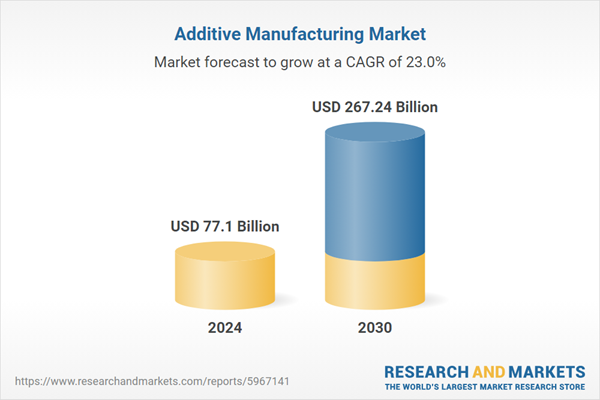Aerospace & Defense is the fastest growing segment, Asia-Pacific is the largest market globally
Speak directly to the analyst to clarify any post sales queries you may have.
10% Free customizationThis report comes with 10% free customization, enabling you to add data that meets your specific business needs.
Key Market Drivers
Technological advancements in printing processes and equipment represent a foundational driver for the global additive manufacturing market. Continuous innovation in areas such as multi-laser systems, enhanced optics, and improved real-time monitoring capabilities directly contributes to increased productivity, greater precision, and expanded material compatibility. These improvements enable the production of more complex geometries and higher volumes with superior quality, making additive manufacturing a more viable solution for end-use parts. For instance, according to 3D Printing Industry, in June 2024, in its article "EOS at Rapid + TCT: Offering All the Components of High-Productivity Metal 3D Printing", Nordic-based 3D printing service company AMEXCI reported a 76% reduction in cost-per-part for a specific application when utilizing the new EOS M 290-2 with its dual-laser technology, demonstrating the tangible economic benefits of such advancements.Key Market Challenges
The substantial initial investment required for advanced additive manufacturing systems, alongside the ongoing costs and complexities of post-processing, represents a significant challenging factor for the global market. This high financial barrier directly impedes market expansion by discouraging potential new entrants and smaller businesses from adopting these technologies. The considerable capital expenditure for machinery, combined with the necessity for specialized equipment and skilled personnel for post-processing to achieve desired part quality and surface finishes, creates a substantial and continuous financial burden.Key Market Trends
The expansion of high-performance material portfolios represents a critical trend shaping the global additive manufacturing market. This involves the continuous development of advanced polymers, metals, and composites that possess enhanced mechanical properties, thermal resistance, and durability, enabling additive manufacturing to address more demanding applications across diverse industries. According to the Wohlers Report 2025, powered by ASTM International, published in March 2025, the global additive manufacturing industry’s material sector demonstrated growth, indicating further industry adoption. The availability of these specialized materials allows manufacturers to produce functional end-use parts that meet stringent industry standards.Key Market Players Profiled:
- 3D Systems Corporation
- General Electric Company
- EnvisionTEC GmbH
- EOS GmbH
- Exone Operating, LLC
- Mcor Technologies Ltd
- Materialise NV
- Optomec Inc.
- Stratasys Ltd
- SLM Solutions Group AG
Report Scope:
In this report, the Global Additive Manufacturing Market has been segmented into the following categories:By Technology:
- Stereolithography
- Fused Deposition Modelling
- Laser Sintering
- Others
By Material:
- Plastic
- Metals
- Ceramics
By End-User:
- Aerospace & Defense
- Automotive
- Healthcare
- Industrial
- Others
By Region:
- North America
- Europe
- Asia Pacific
- South America
- Middle East & Africa
Competitive Landscape
Company Profiles: Detailed analysis of the major companies present in the Global Additive Manufacturing Market.Available Customizations:
With the given market data, the publisher offers customizations according to a company's specific needs. The following customization options are available for the report:- Detailed analysis and profiling of additional market players (up to five).
This product will be delivered within 1-3 business days.
Table of Contents
Companies Mentioned
- 3D Systems Corporation
- General Electric Company
- EnvisionTEC GmbH
- EOS GmbH
- Exone Operating, LLC
- Mcor Technologies Ltd
- Materialise NV
- Optomec Inc.
- Stratasys Ltd
- SLM Solutions Group AG
Table Information
| Report Attribute | Details |
|---|---|
| No. of Pages | 186 |
| Published | November 2025 |
| Forecast Period | 2024 - 2030 |
| Estimated Market Value ( USD | $ 77.1 Billion |
| Forecasted Market Value ( USD | $ 267.24 Billion |
| Compound Annual Growth Rate | 23.0% |
| Regions Covered | Global |
| No. of Companies Mentioned | 10 |









